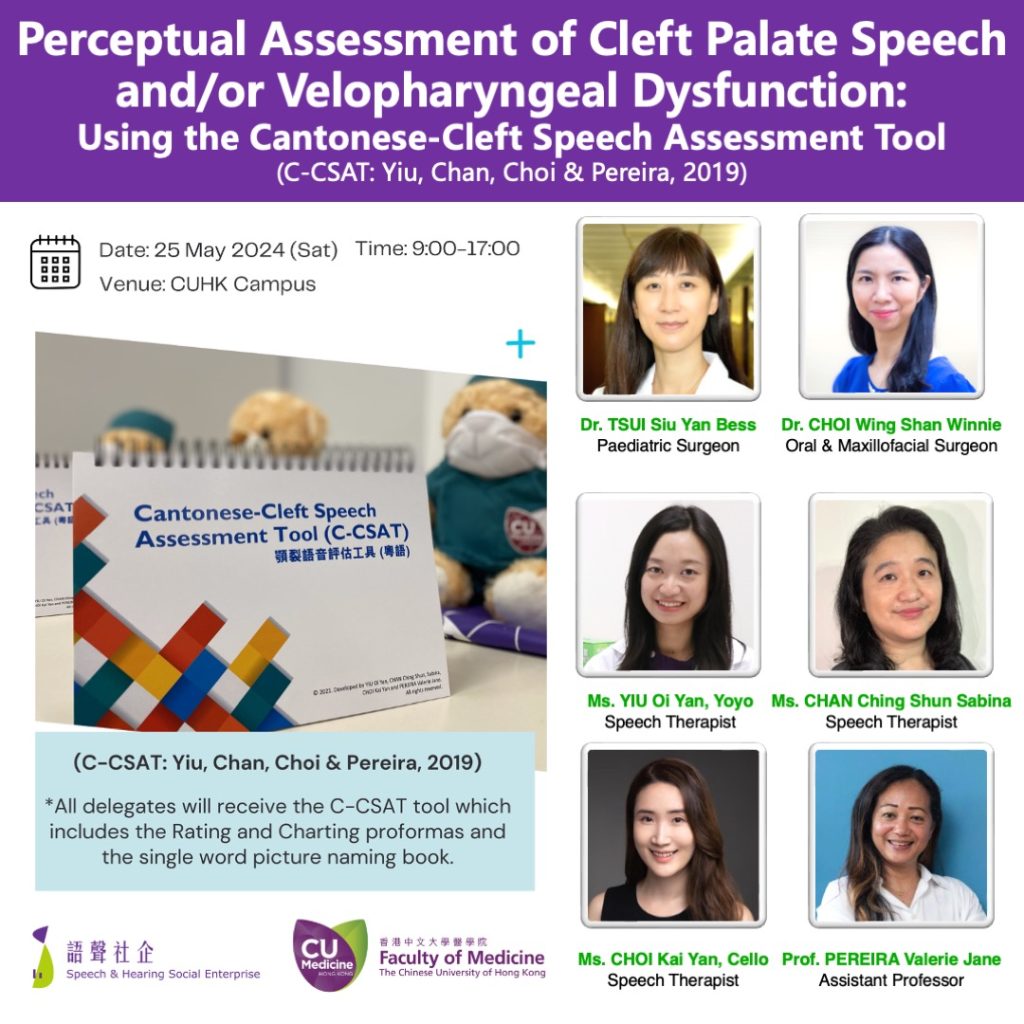
Description
Cleft Palate Speech/ Velopharyngeal Dysfunction (VPD) is complex and multifaceted. Even following primary repair of the palate, the child may present with cleft palate speech, and a proportion of children will continue to have VPD. Accurate and reliable assessment by the Speech Therapist is important for differential diagnosis and direction of management. With Submucous Cleft of the Palate, the Speech Therapist is often the first professional the child is referred to. Knowledge, assessment, and profiling of cleft palate speech and/or VPD, is therefore essential.
Perceptual assessment of cleft palate speech and/or VPD remains at the core of speech methodology, and is the gold standard in providing outcome data for clinical assessment and research to support evidence-based practice in the field. Although there is yet no single internationally standardized approach, there is a range of specified and internationally agreed upon articulation and non-articulation parameters in cleft palate speech and VPD, as well as guidelines on speech sampling and elicitation methods. Accurate and valid assessment of the full range of possible speech outcomes requires a clinical tool that encompasses a systematic framework and profiling system.
In this seminar, participants will be introduced to the range of speech outcomes in the assessment of cleft palate speech and/or VPD dysfunction and will be orientated to the Cantonese-Cleft Speech Assessment Tool (C-CSAT, Yiu et al., 2019), which has already been disseminated to over 200 Speech Therapists in Hong Kong and Macau. There will also be opportunities for listening and ratings practice and clinical phonetic transcription In Cantonese, based on audio and audio-video recordings of real cases.
"
Register for a free account to purchase as a non-member"

